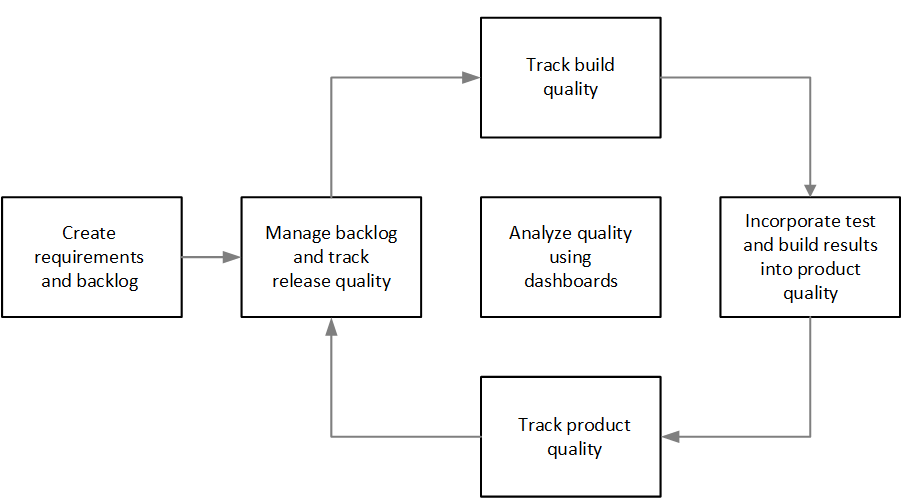Product lifecycle
The product lifecycle includes stages to manage, track, and analyze your progress during a release.
Typical workflow
A workflow indicates the steps you perform to move between stages. You can define stages in any order, with certain limitations. For example, you can define your backlog before you create requirements. However, some stages must precede others. For example, you must define manual tests or automated tests and execute them before you can track quality.

The following sections describe the main steps of setting up a workflow, as indicated in the above diagram.
Track build quality
To track build quality and collect automated test run results, integrate ALM Octane with a CI server. When the pipelines run, ALM Octane collects test run results and SCM data. This information can be used to analyze build, release, and product quality.
You can view the CI server pipeline steps graphically, trigger pipeline runs, and label pipeline steps as different types of jobs configured for different environments. The pipeline display lets you see the status of builds and test runs that are included in the pipeline run, and to analyze failures.
For details, see Pipelines.
Create requirements and manage the backlog
Depending on your development methodology, you can create high-level requirements, or build a detailed backlog tree with epics, features, and stories. For details, see Requirements and Backlog.
You can create tests to track release quality, including functional, sanity, acceptance, security, and performance tests. For details, see Manual testing.
You can also integrate with a CI server to get results of automated tests. As you implement user stories, you can report defects and monitor their progress. For details, see CI server integration flow and Automated testing.
Analyze quality
You can analyze release progress and quality using the Overview tab, in both the Backlog and Quality modules.
When you run manual tests and CI server pipelines, results are automatically incorporated into the dashboard. You can then use the dashboard, which includes a range of charts and graphs, to analyze release quality. For details, see Dashboard.
For details on analyzing the release quality, see Release quality.
Incorporate test and build results into product quality
After a release goes out, integrate the testing of individual new features into the testing of the overall product. In the release backlog, assign features and defects to application modules, which represent the functional parts of your product.
You can also incorporate manual and automated tests into the overall testing of the product, and assign tests to application modules. For details, see Assign items to application modules.
Track product quality
You can group the functional areas of your product according to application modules. To build an application module tree, create nodes for each area that is essential for testing the overall quality of your product.
Tests can be connected to application modules. When you run tests and CI server pipelines, results are incorporated into the dashboard. You can then use the dashboard to analyze overall product quality. For details, see Quality.
Throughout your release lifecycle, you continue to track release quality, build quality, and product quality, as described above.
 See also:
See also:












